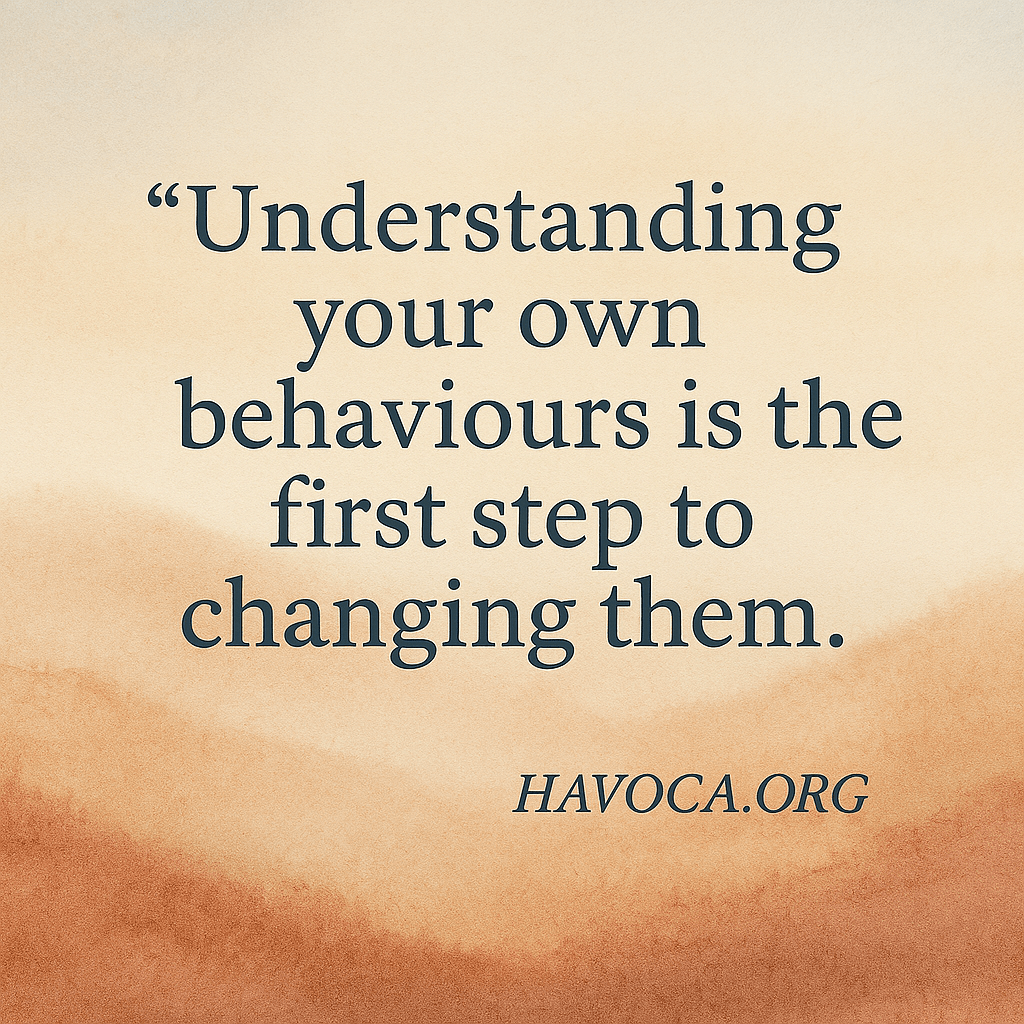 Knowing Yourself: Understanding Behaviour and Building Resilience
Knowing Yourself: Understanding Behaviour and Building Resilience
Recovery from abuse doesn’t start with a perfect plan — it starts with a question: Why do I feel and act the way I do?
For many survivors, behaviours that seem irrational or disruptive make perfect sense when seen through the lens of trauma. Avoidance, overexplaination, hypervigilance, people-pleasing — these aren’t character flaws. They’re survival strategies shaped by experiences that forced us to adapt in order to feel safe.
To understand our behaviours is to reclaim power. Not to blame ourselves. Not to “fix” who we are. But to see our responses with clarity, compassion, and curiosity.
Behaviour as Survival
Sometimes we ask:
- “Why do I lash out when I feel overwhelmed?”
- “Why can’t I trust people, even when they’ve done nothing wrong?”
- “Why do I keep choosing situations that hurt me?”
The answers often lie not in what’s wrong with you — but in what happened to you.
Understanding trauma responses helps demystify:
- Emotional flashbacks
- Avoidant or reactive communication
- Freeze responses
- Difficulty with boundaries
- Overfunctioning or chronic guilt
These patterns were your nervous system’s way of protecting you. But they don’t have to define you.
Building Management Strategies
Once we understand a behaviour, we can begin gently, creatively managing it. Some strategies survivors use include:
- Naming the response. “This is a trauma reaction. I’m not broken.”
- Using grounding tools. Breathwork, sensory anchors, self-talk — practices that reconnect you to the present.
- Practising body awareness. Notice tension, shifts in posture, stomach clenching. Your body often signals discomfort before your mind catches up.
- Setting micro-boundaries. You don’t have to say yes to everything. Start with one clear no.
- Tracking patterns. Journaling, voice notes, or emotion logs can help spot triggers and recurring themes.
You don’t need perfect consistency. Just gentle practice, and the reminder that you’re allowed to grow past what once protected you.
Resilience Doesn’t Mean Toughness
Resilience isn’t just enduring pain. It’s recovering from it — with less self-punishment.
For survivors, building resilience often means:
- Trusting your internal signals
- Resting before burnout
- Connecting with others who believe you
- Letting go of loyalty to unsafe systems
- Choosing safety, even when it feels unfamiliar
It’s okay if resilience today looks like getting out of bed. Or posting in the forums. Or setting one soft boundary. These moments count.
Final Thoughts
Learning about yourself isn’t self-indulgent. It’s self-restoration.
Managing trauma responses doesn’t erase the past, but it does offer freedom in the present. And building resilience isn’t about doing it alone — it’s about remembering you don’t have to.
You’re allowed to be complex. Tender. Brave. And still figuring it out.
We’re proud to walk with you.
Recommended Reading
If you’d like to explore these themes further, these three books offer insight, support, and practical tools for your journey of self-discovery and resilience:
- Developing Resilience: A Cognitive-Behavioral Approach by Michael Neenan A practical guide to building inner strength, this book explores how our thoughts shape our responses and how we can cultivate resilience through gentle mindset shifts.
- Healing Developmental Trauma: How Early Trauma Affects Self-Regulation, Self-Image, and the Capacity for Relationship by Laurence Heller & Aline LaPierre This book introduces the NeuroAffective Relational Model (NARM), offering a compassionate framework for understanding how early relational trauma shapes behaviour — and how healing is possible through connection and self-awareness.
- No Bad Parts: Healing Trauma and Restoring Wholeness with the Internal Family Systems Model by Richard Schwartz A powerful introduction to Internal Family Systems (IFS), this book helps readers understand their inner world as a system of protective parts — and how embracing those parts can lead to profound healing and integration.
These books offer not just knowledge, but companionship — validating what you’ve lived through and encouraging what you’re becoming.



